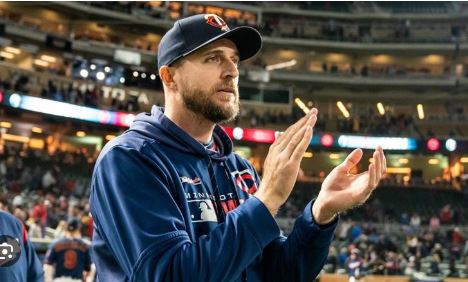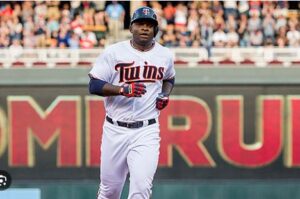
Be Like Ant: Minnesota Twins History’s Finest 22-Year-Old Players
The Minnesota Timberwolves, who start as favorites in the Western Conference Finals, are in unfamiliar territory. The 22-year-old Anthony Edwards has guided the team during the postseason. For the next week or so, the Twins will be playing (both literally and figuratively) under the Wolves’ shadow, so it’s only fitting to ask: who are the greatest Ant-Man imitators in Twins history?
Friday night’s games in Minneapolis will be exciting: the Timberwolves take on the Mavericks, while the Twins play the Rangers. The team’s current playoff run has made Anthony Edwards the face of the franchise. At the young age of 22, he has an extraordinarily promising future ahead of him. To determine which players are the best in their age-22 season, let’s take a look back at the Twins’ past.
Twins Daily recently introduced the Minnesota Twins Players Project. The Players Project: What is it? It’s a wiki-style community-driven project that highlights Twins players of all colors. It’s available to all Twins Daily readers, and players who have played in the Twins farm system but never made it to the major leagues have contributed. You can add more players to the project after some of the characters from this story have already been added.
Miguel Sano (2.0 WAR), Byron Buxton (2.0 WAR), Rod Carew (1.7 WAR), Luis Arráez (1.8 WAR), Zoilo Versalles (1.5 WAR), and Butch Wynegar (1.5 WAR) are all deserving of honorable mention.
5. 2.1 fWAR for Chuck Knoblauch
Knoblauch made his major league debut in 1991 during the Twins’ incredible World Series run. He had a.281/.351/.350 batting line in 151 games along with 25 steals and 31 extra-base hits. He narrowly missed being voted the AL Rookie of the Year, finishing ahead of future Hall of Famer Iván Rodríguez by two votes. Knoblauch has four All-Star appearances, two Silver Sluggers, and a Gold Glove, making him one of the best on-field players in Twins history. His unhappy departure from Minnesota was a result of his well-known bad off-field conduct. Unfortunately, he serves as a reminder that tremendous success and notoriety at a young age can conceal—or even encourage—disrespectable choices.
4. 2.6 fWAR for Tom Brunansky.
Brunansky entered his age-22 season having played in 138 major league games. In May 1982, he and Mike Walters were traded to the Twins in exchange for Rob Wilfong and Doug Corbett. He hit.227,.308,.445 in 1983, with five triples, twenty-eight home runs, and twenty doubles. In comparison to his incredible 1982 season, which saw him record a career-high WAR, his 103 OPS+ was 26 points lower. When the Twins hosted the game at the Metrodome in 1985, he was an All-Star and took part in the first-ever Home Run Derby. He played a key role in the team’s inaugural World Series campaign in 1987. Regretfully, he was part of one of the most notorious trades in franchise history when the front office sent him to St. Louis for Tom Herr.
3. Carlos Gomez: fWAR of 2.7
In addition, Gómez was a part of one of the most well-known trades in Twins history, in which the Twins acquired four prospects in exchange for Johan Santana. In 153 games, he recorded a 77 OPS+ during his age-22 season, which was also his first in Minnesota. Although Gómez was renowned for his excellent center-field defense, he had trouble establishing a reliable offensive strategy while playing for the Twins. In his debut season, he contributed -14.4 offensive value and 20.1 defensive value. In November 2009, he was traded for J.J. Hardy to the Milwaukee Brewers. He became a two-time All-Star with the Brewers, winning two Gold Gloves and two top-16 finishes for the NL MVP.
2. 3.3 fWAR for Kent Hrbek
Since his first season, Hrbek has been a Twins legend. He played a major role in the teams that won the World Series in 1987 and 1991. He was a 22-year-old playing in his first major league season in 1982. Hitting.301/.363/.485, he had an OPS+ of 128. That season, he made his only All-Star appearance and came in second to Cal Ripken Jr. for the AL Rookie of the Year award. Throughout his career, he hit a number of significant home runs, including a grand slam in Game 6 of the 1987 World Series and the game-winning home run in his MLB debut at Yankee Stadium.
1. Joe Mauer: fWAR of 3.4
Despite never having played a game at Triple-A, Mauer made his MLB debut after dominating the minor league ranks as the team’s top prospect. His leg injury ended his rookie season, so his age-22 campaign was his first full season in the major leagues. He had an OPS+ of 107 and hit.294/.372/.411 in 131 games. He was just getting started with the Twins, but he already brought value to the team on both sides of the ball. In addition to three batting titles, six All-Star selections, five Silver Sluggers, and three Gold Gloves, Mauer was named the 2009 MVP. His excellence began in his age-22 season, and he was only the third catcher to be elected as a first-ballot Hall of Famer.
Mauer and Edwards are the most similar players to each other among them; both were selected first overall and were under intense pressure to turn around a struggling team right away. Of course, part of that pressure came from being a hometown boy, and Edwards does not carry that additional responsibility or bond, but Minnesota sports fans would have to consider themselves among the luckiest in the nation if he were to emulate Mauer’s lengthy career and harmonious relationship with the Twins. For now, all they can do is hope Edwards achieves the kind of momentary on-field fulfillment (a championship) that Mauer and his Twins teams were unable to obtain.
Do you think the rankings make sense? Are there any honorable mentions that belong in the top five? Post a COMMENT to initiate the conversation.
Do you have a fascination with Twins past? The Minnesota Twins Players Project is a community-driven initiative that aims to find and compile excellent information on every player to have worn a Twins uniform. Check it out!
Leave a Reply